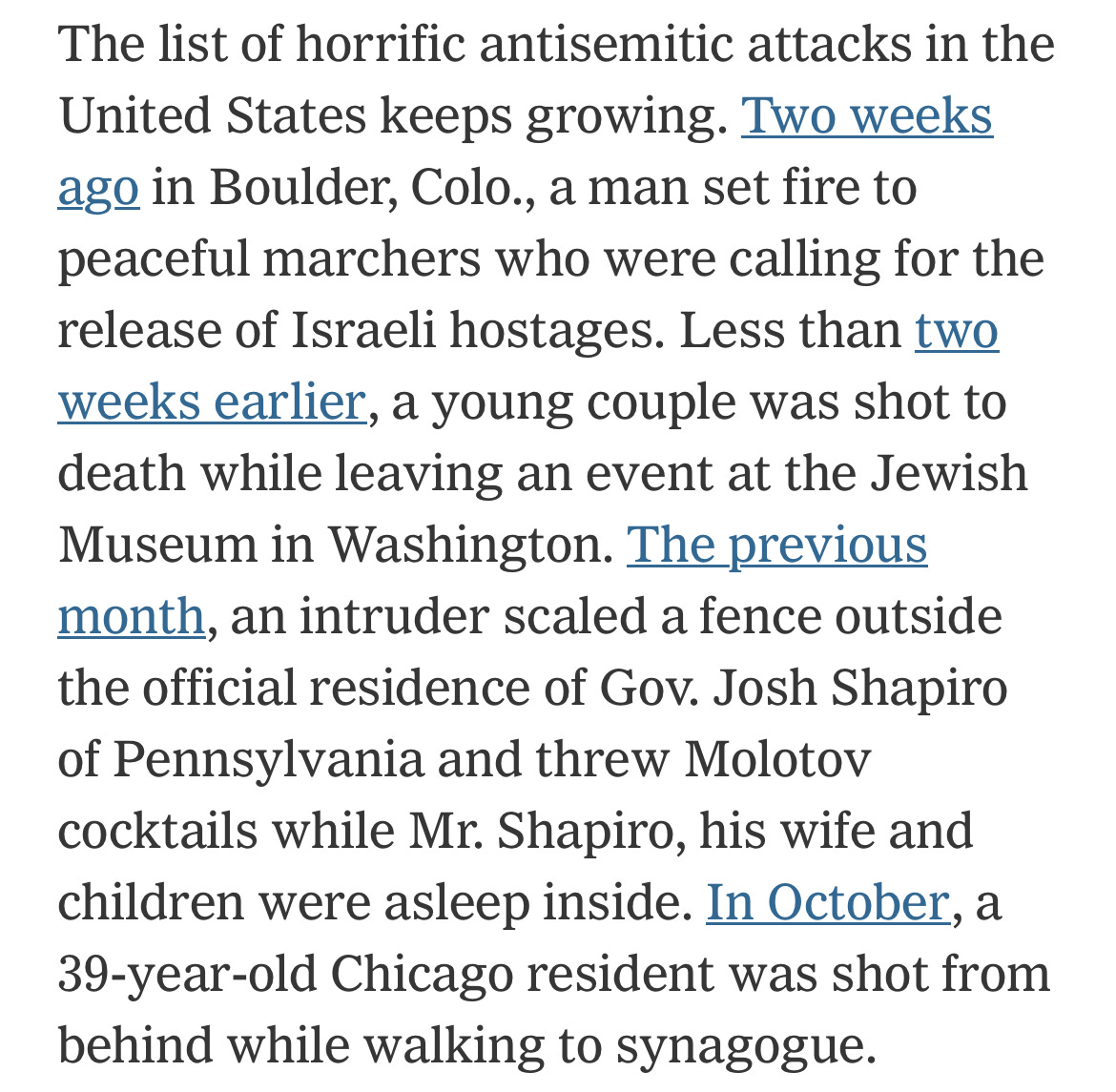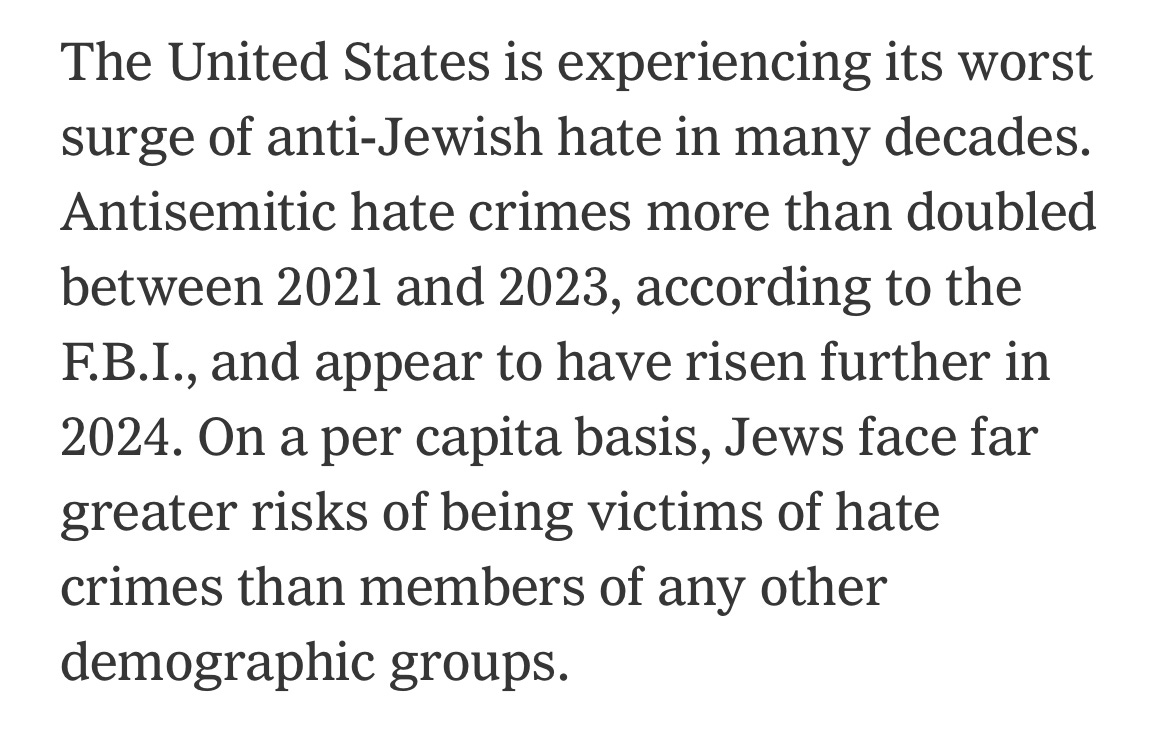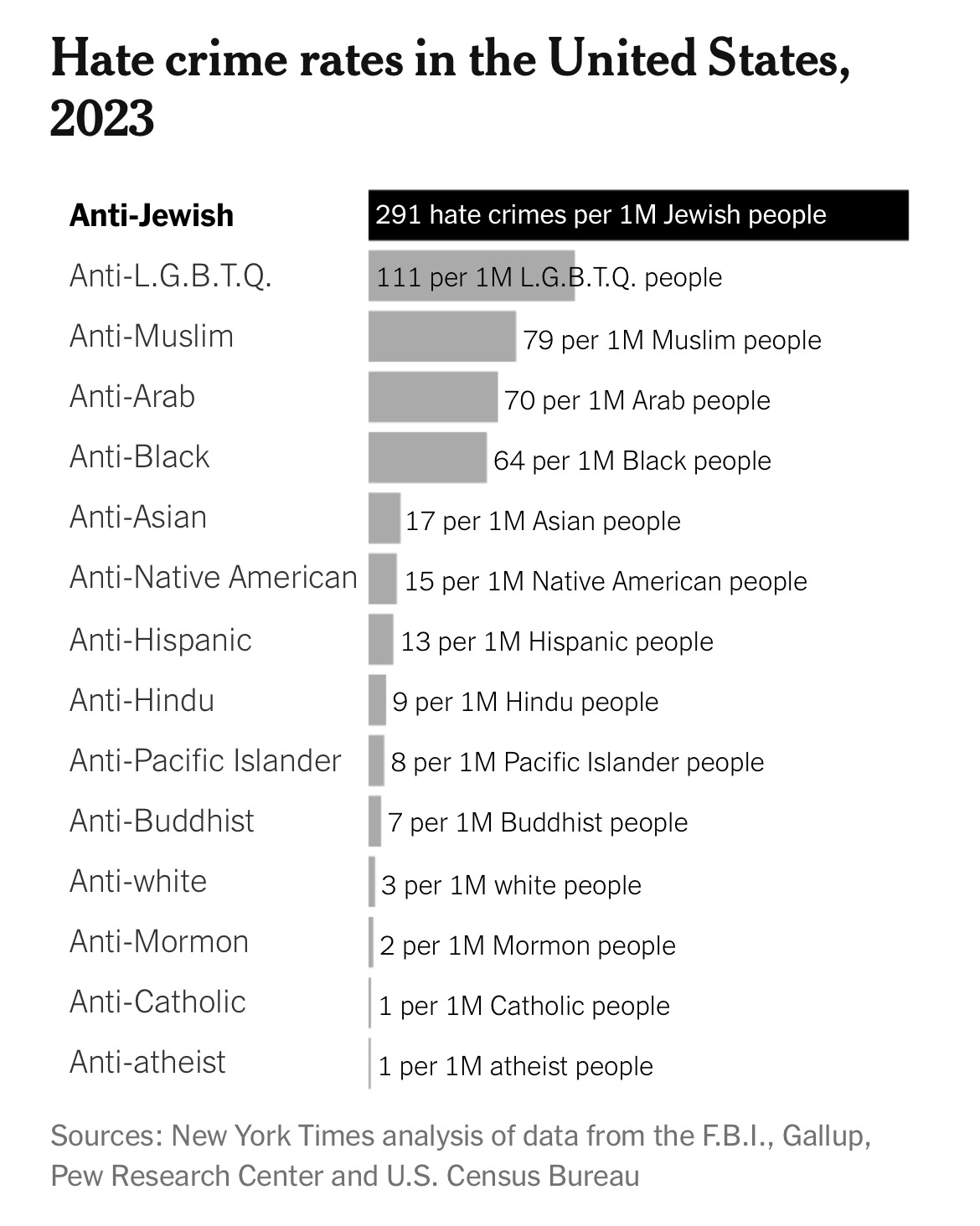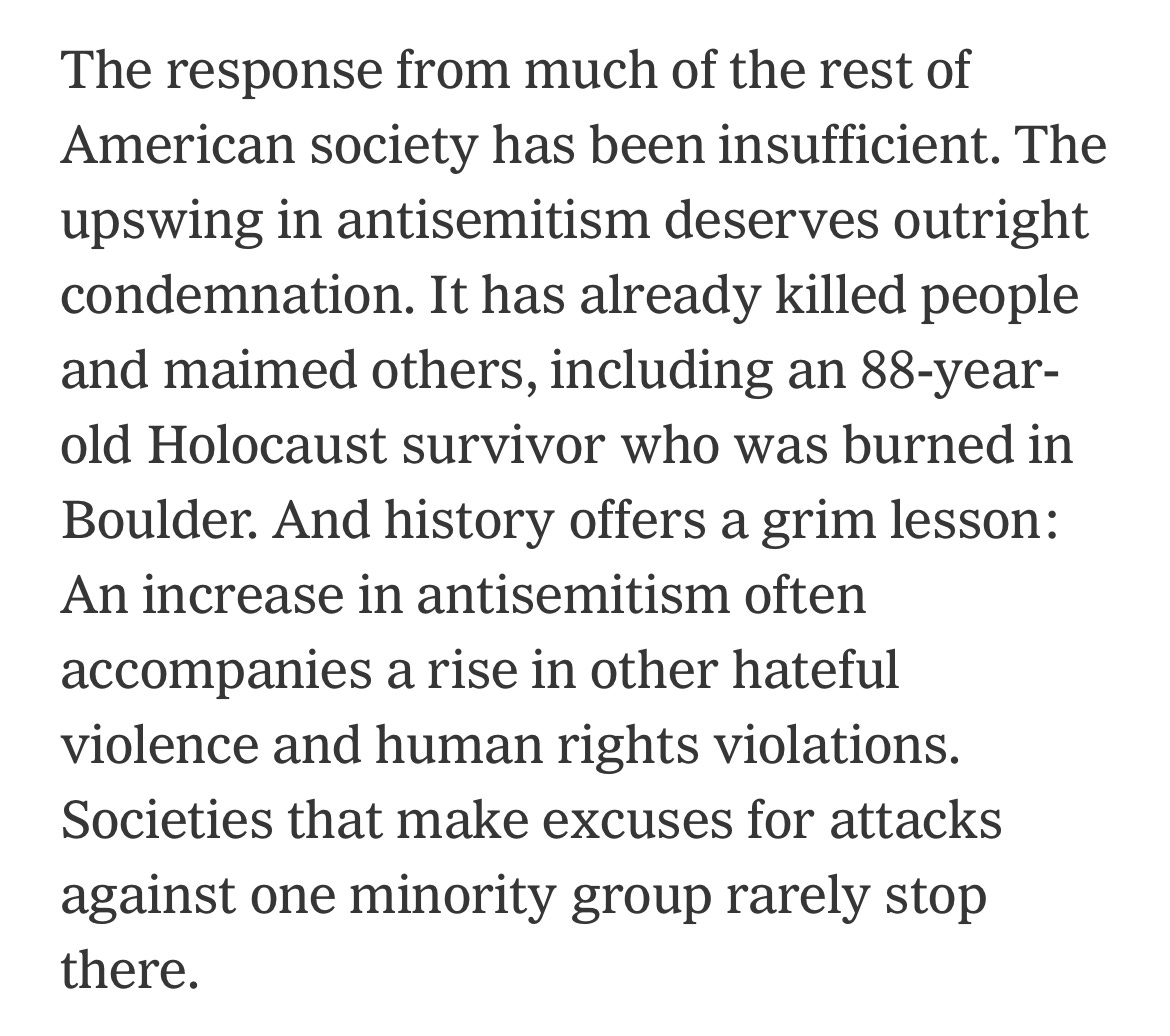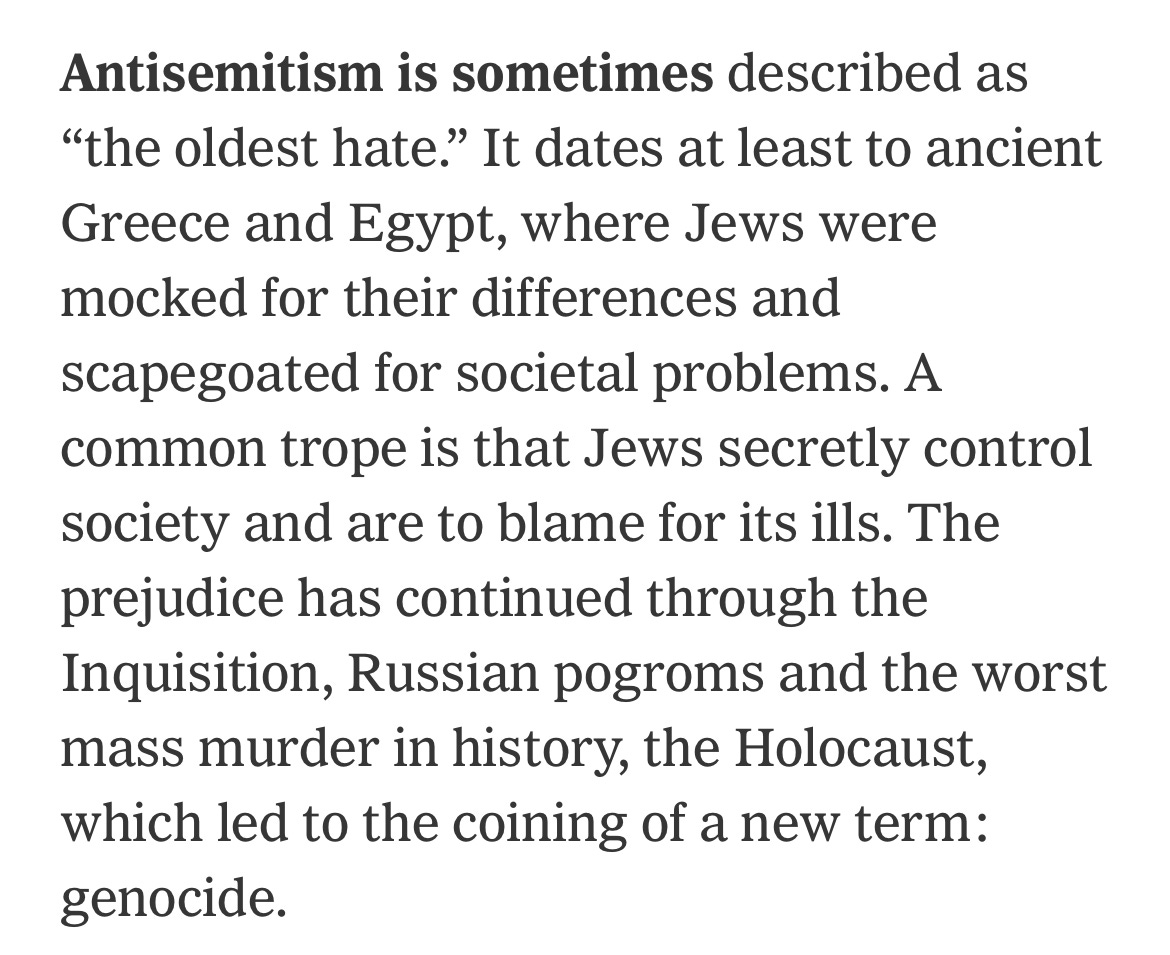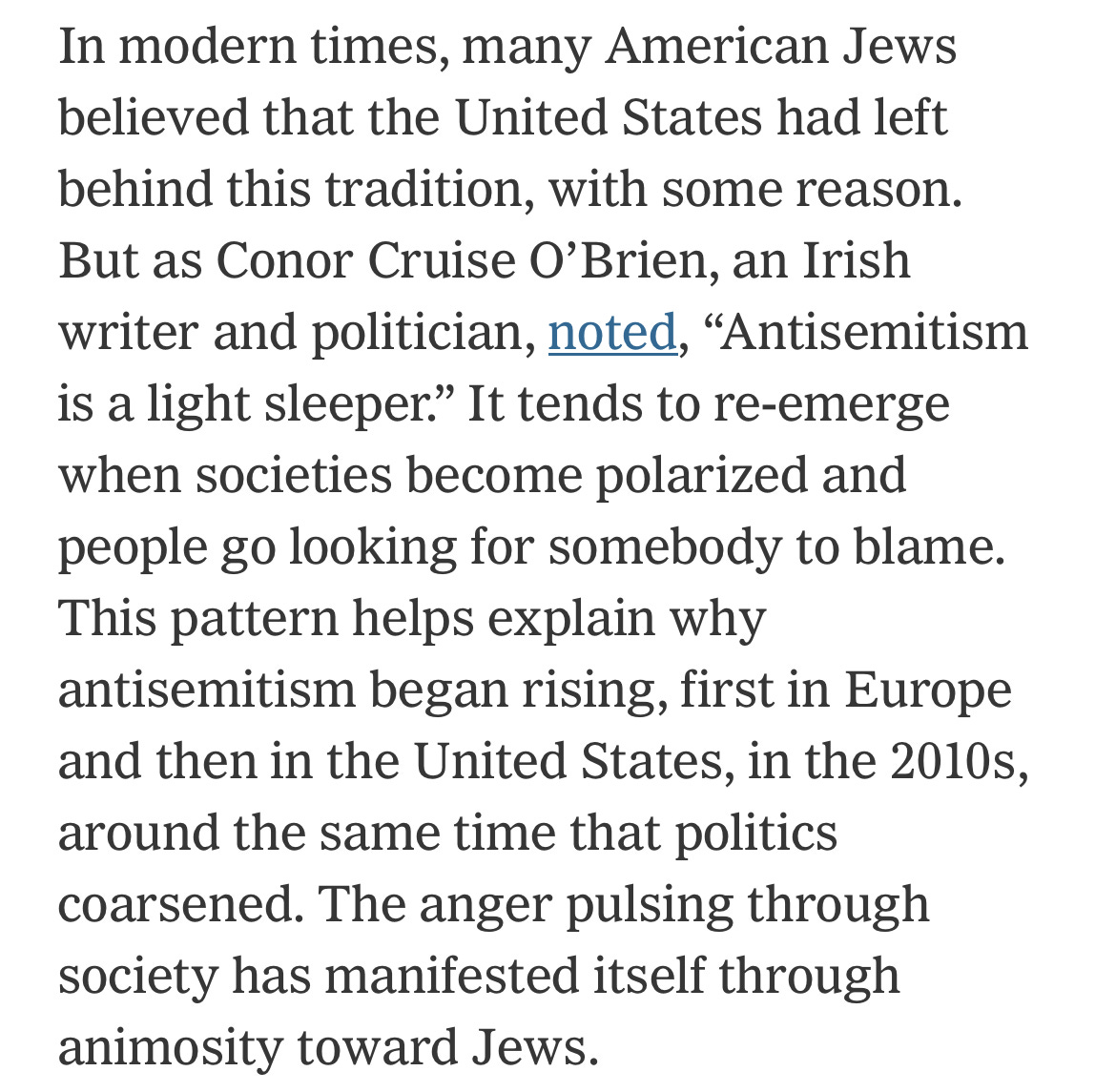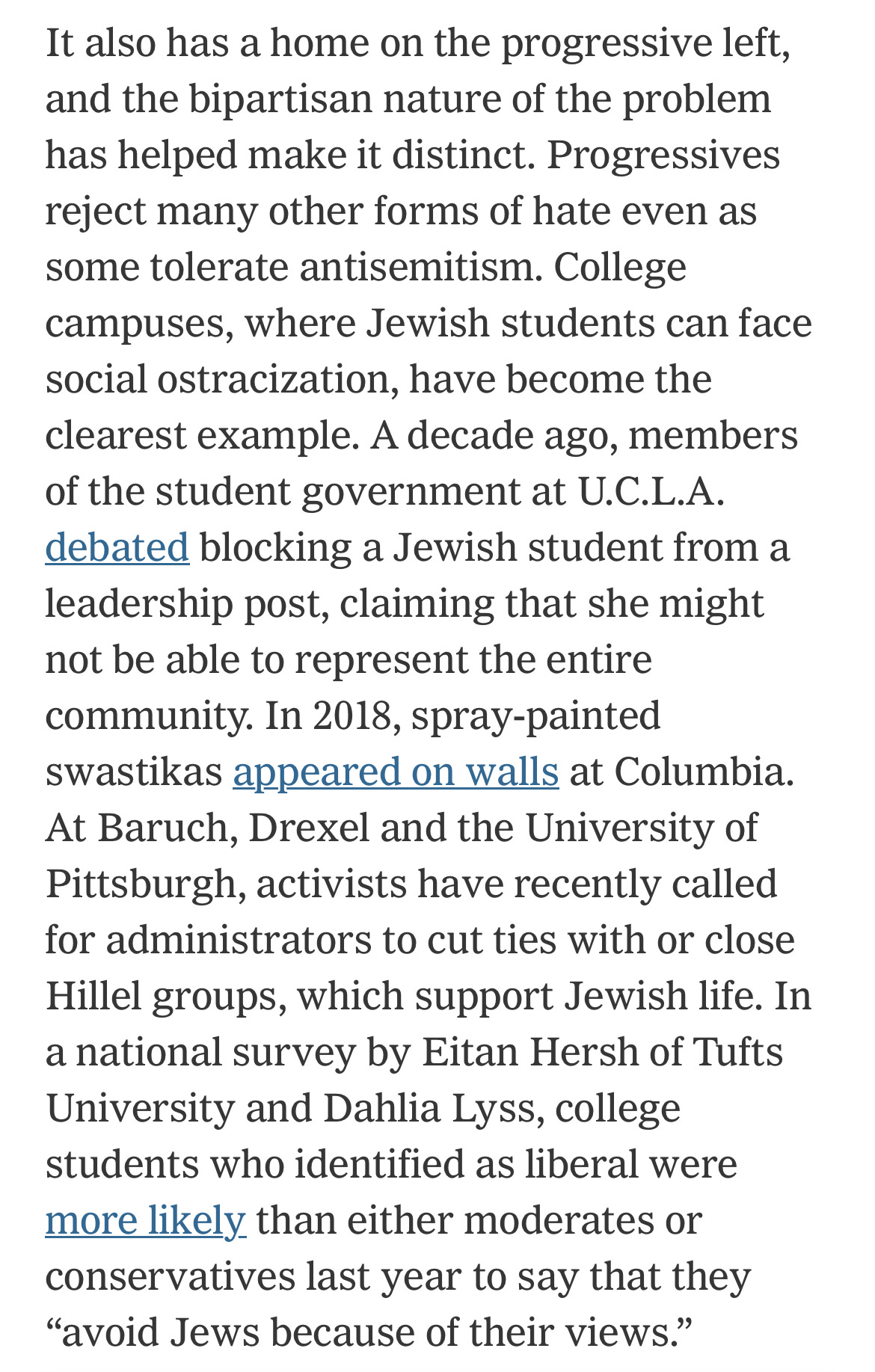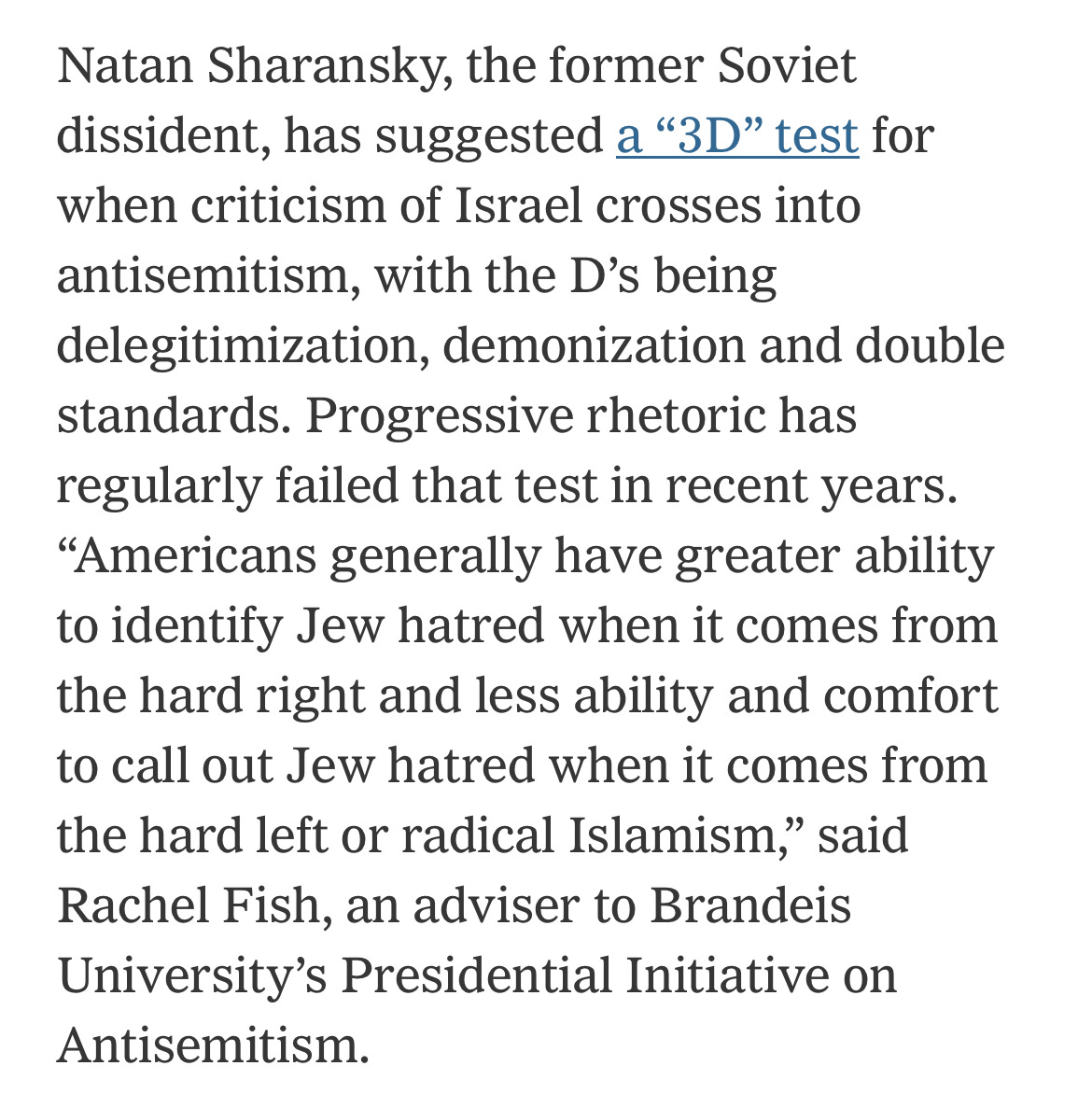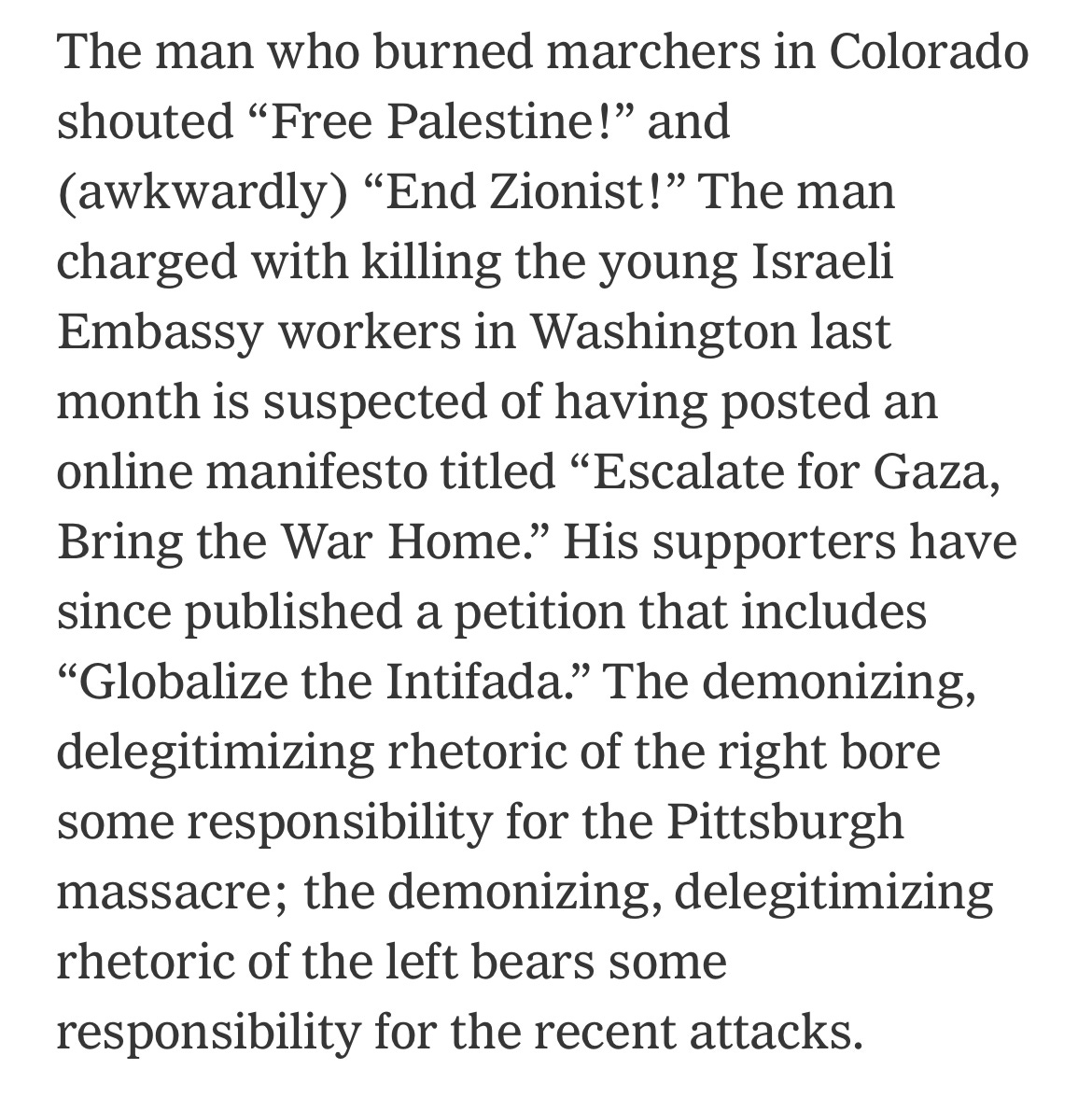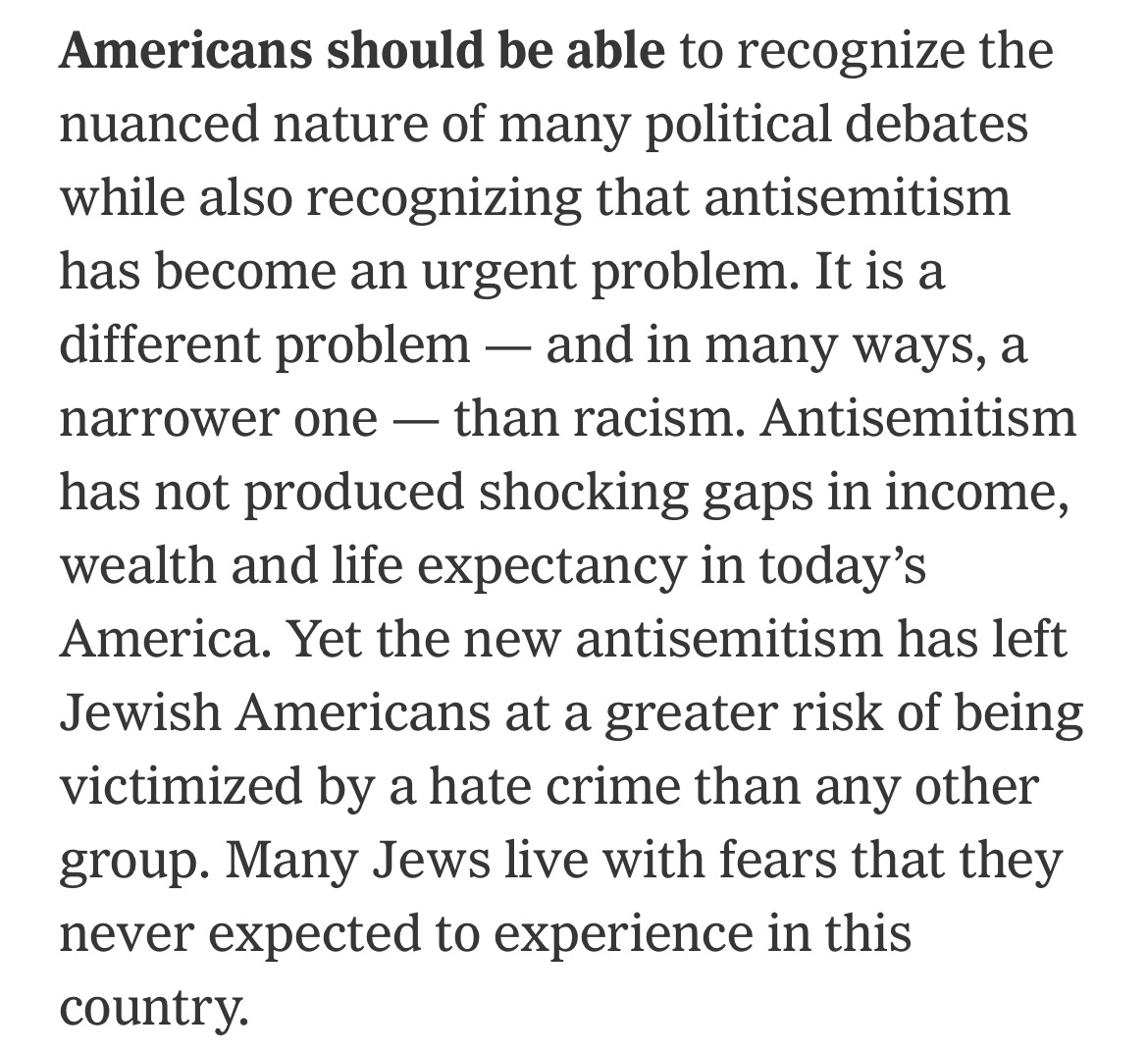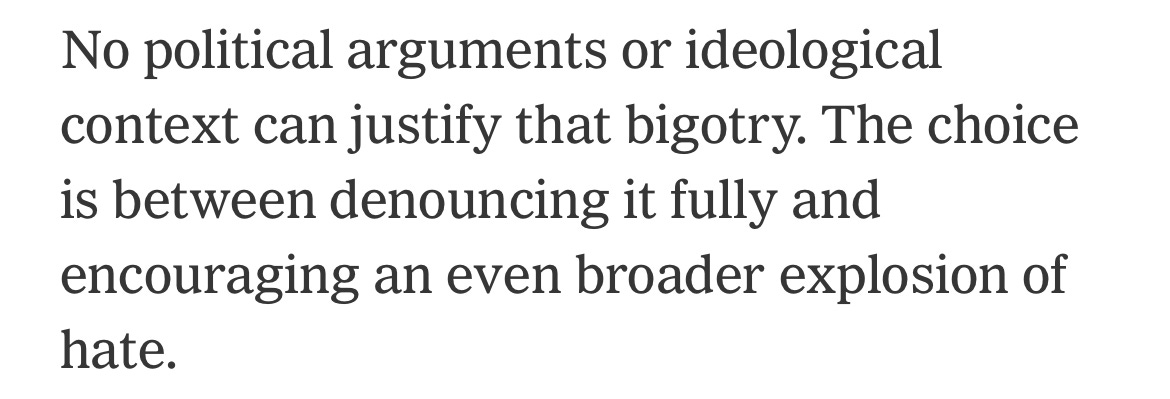Fanning the Flames of Fake Anti-Semitism
A 'New York Times' editorial illustrates the ongoing brain drain in the U.S. of Israel
Welcome to another episode of my flagship scroll, The Book of Sean M. P.
On Easter Sunday I went outside to smoke some 420 on 4/20. Not more than several tokes in did a family come for an egg hunt on the front lawn of the elementary school—Columbus—on whose front bench I sat. So I moved around the corner to a low stone border between a curved row of plants and another patch of grass and perched there in the sun. It was a beautiful day and even though I was irritated to have to relocate, I was better off for it in the end. That’s a lesson I try always to remind myself of: that change is good, no matter how bothersome it may seem initially. Indeed, it’s the fundamental law of existence.
I note that No Other Land, the Oscar-winning documentary whose name and message inspired one half of my new video series, The Armenian Quarter or No Other Land, recently streamed in the U.S., ending a de facto viewership ban. It’s a brilliant work of guerrilla cinema that shows the degree to which the Israeli state—backed by the U.S.—goes to maintain dominance in the West Bank, ceaselessly killing and injuring residents and destroying homes, schools, businesses, and other foundations of life and society. That level of violence has only been exceeded in Gaza, where the U.S. and Israel continue to defy the U.N. and international law in their war of attrition.
Meanwhile, for anyone who can spare a Lincoln, I’ve launched a “Buy Me a Coffee” as a modest but very meaningful way to appreciate the labor I donate to create all the “free” content on this site. And it’s all free—there are no paywalls here.
On the flip side of the coin, I’m patiently awaiting an angel investor to join my Pantheon, for which you’ll receive both my boundless gratitude and a one-of-a-kind personalized artifact from my archives.
Not already subscribed? You can take care of that business at any tier—free, monthly, or founding—by hitting the button below.
Now on with the show. <3
Atrocities R Us

Before I get into my (paragraph by paragraph) rejoinder to the New York Times editorial board’s ridiculous propaganda piece from Saturday on the purported rise in “antisemitism” in the U.S., I need—as ever—to set the context.
If people don’t want to be harmed, they shouldn’t harm other people. The illegal Israeli entity—illegal because it’s in violation of innumerable resolutions passed by the United Nations, including the resolution that created the “state”—didn’t have to respond to the 10/7 attacks. Indeed, if “Israel” were truly a home for Jewish people and not a secular client state of the U.S., it would’ve honored—throughout its existence—the Jewish precept that “every life is precious.”
Unlike the Old Gray Lady and many other contemporary sources, I choose to use an alternate form of the same term to describe animus against people who identify as Jewish—anti-Semitism—precisely because it keeps the focus on the “race” of people in question: Semites, or people who were once considered Semitic. Critics who don’t know better call such a reference to the history of the phrase an “etymological fallacy,” but I call it history, period—and anti-Semitism is inseparable from the history of race. Indeed, the whole idea of people as members of separable groups is racist. We’re all the same species—Homo sapiens—and thus there are no divisions between us, save for the artificial ones made by humans.
If Zionism—a category of identity, not of DNA—is the target of scorn, anger, and, yes, violence, that’s because Zionism is genocidal to its core. It’s also terroristic, given that when Palestinians peacefully protest—as they did in the Great March of Return in 2018 and 2019—they’re still slaughtered by Israeli soldiers.
After the recent ICE raids in Los Angeles, in which the fascist Trump administration instigated violence against people in order to provoke a “violent” response, I no longer believe in a meaningful distinction between peaceful and non-peaceful protest—not when the state holds a monopoly on violence, as the staged L.A. drama reminded me.
Armed resistance by occupied people is protected under international law.
Next up: hasbara central.
The Times editorial board’s analysis begins with three false examples of anti-Semitism and one unproven one.
In Boulder, the perpetrator shouted “Free Palestine” in solidarity with Palestinians in their struggle against the Israelis.
In Washington, the perpetrator shouted “Free Palestine” and targeted Israeli embassy staffers. Afterwards, he explained: “I did it for Palestine. I did it for Gaza.”
In Harrisburg, the perpetrator cited Palestine as the reason for his actions.
In Chicago, no motive for the shooting has been ascertained—and the suspect supposedly killed himself in jail.
In sum, out of the four ostensible incidents of anti-Semitism with which the editorial opens, none have been shown to be motivated by hatred of Jewish people.
In other words, the entire pretext of the editorial falls down right at the start because anti-Semitism and anti-Zionism are two separate phenomena, regardless of the Times’s effort to make them the same.
The entire pretext of the editorial falls down right away because anti-Semitism and anti-Zionism are two separate phenomena, regardless of the Times’s effort to conflate them.
In the next paragraph, the unfounded statements read as if they were composed by ChatGPT. (And who knows—maybe they were!) Each declaration is a huge assumption with no obvious facts to support it.
As already shown, the Times deliberately conflates anti-Semitism with anti-Zionism from the start, so readers have no idea whether any of these instances of “anti-Jewish hate” are in fact instances of anti-Jewish hate.
Readers also have no idea whether any of these purported cases of anti-Jewish “hate crimes” were ever judged to be hate crimes in a court of law with due process provided the defendants.
The category of “hate crimes” is an exceedingly political one—not to mention an exceedingly small one compared to the atrocity crimes that “Israel” has normalized with U.S. backing.
A table of data follows, but it’s a non-starter.
As already demonstrated, readers have no idea what the Times means by “anti-Jewish.”
The raw data the editorial board used to make its table has been excluded, so readers can’t independently verify the Times’s analysis.
The veracity of the Times’s own analysis—based on data sets from four different sources—can’t be trusted because the editorial board has already proven it doesn’t know what an anti-Jewish hate crime is.
As someone who tutored a student at Harkham Hillel Hebrew Academy in Beverly Hills—a Zionist institution where guards in military-style gear, armed or not, are a visible presence—I’m not insensitive to the perceived threat of harm. But perception isn’t reality. Perception, indeed, is the problem. For instance, Israelis perceive themselves to be in harm’s way, but given their protection by the U.S. and their use of “great American equipment,” they’re obviously not in harm’s way.
Another problem: the lack of sourcing for the claim that a “small industry of digital specialists combs social media looking for signs of potential attacks.” How come this assertion isn’t hyperlinked like the point about the awareness of “the threat”? And what are these specialists looking for exactly? What constitutes “signs of potential attacks”? Someone writing “Free Palestine” on X? Because stating “Free Palestine,” according to the Times, is anti-Semitic.
The lack of sourcing continues with the following claim: “[T]hese specialists have helped law enforcement prevent several [attacks].” Readers are just supposed to believe what the Times asserts? We’re just supposed to accept what law enforcement says, sans evidence? Why would any person do that, let alone a journalist?
I condemn anti-Semitism.
(That was an “outright condemnation,” no?)
Meanwhile, let’s revisit the context I set at the start of this post. Per the U.N. Human Rights Council report on the Great March of Return:
Victims who were hundreds of metres away from the Israeli forces and visibly engaged in civilian activities were shot, as shown by eyewitness accounts, video footage and medical records. Journalists and medical personnel who were clearly marked as such were shot, as were children, women, and persons with disabilities.
If the Times editorial board were genuinely concerned with the relationship between anti-Semitism and “other hateful violence and human rights violations,” it would’ve begun with the inescapable background of routine dehumanization perpetrated by the Israeli entity with both full impunity and the full backing of the U.S. Random, uncoordinated acts of dehumanization—such as the ones in Boulder, Washington, Harrisburg, and Chicago—are nothing compared to state-sponsored mass violence committed by a military against civilians.
“Societies that make excuses for attacks against one minority group rarely stop there.”
Well, this entire editorial is just one giant excuse for the genocide of Palestinians.
Here the editorial board invokes the “common trope…that Jews secretly control society and are to blame for its ills.” True, that is a common anti-Semitic trope—but not one invoked by any of the four alleged perpetrators of anti-Semitism the board uses as examples. So what’s the point of this point? (Answer: There is none. It’s a red herring.)
Secondly, the originator of the term “genocide” would recognize the genocide of Palestinians as exactly that: genocide.
(Why the Times can’t take the opportunity to condemn the genocide of Palestinians given this set-up is anyone’s guess.)
Once again disposing of all context, the Times is on it: Anti-Semitism is caused by a “coarsened” politics.
Well, who coarsened the politics? Could it be the person who just renamed seven military bases for Confederates? I don’t believe the FBI tracks such hate crimes, do they?
Further, according to the Times, “Jews” are the only people victimized by this “anger pulsing through society”—no one else is mentioned. As such, the Times believes Jewish people are the only victims in society—the logical conclusion of the doctrine of Jewish supremacy, the fundamental ideology of Zionism.
Talk about a pretext: as Jason Stanley, an expert on propaganda and fascism (who—wait for it—is also Jewish), has explained: the Trump “administration is saying, we’re going to destroy the universities and tell you it’s because of the Jews.” And American higher education has fallen for this pretext hook, line, and sinker.
So has the Times.
I don’t believe it! Buried in the eighth paragraph: four examples of actual anti-Semitism (Holocaust denial, nominations of anti-Semites, and the statements “Jews will not replace us” and “the big Jew”).
Q: Why didn’t the editorial board lead with these examples?
A: They wouldn’t have had an editorial if they had.
So here we have an example of the trope “that Jews secretly control society.”
Noted.
Also noted:
The sweeping generalization—sans evidence—that “Progressives reject many other forms of hate even as some tolerate antisemitism.”
The reduction of “progressives” to a few college activists—who, for the Times, stand in for all people with progressive political views.
The lack of distinction between “progressive,” “liberal,” and “moderate” views. The Times doesn’t know the difference between the three?
TL;DR: This whole editorial is an exercise in “whataboutism.”
“Progressive rhetoric has regularly failed [the ‘3D’ test] in recent years.”
Another sweeping generalization without evidence. Can’t be taken seriously.
The quotation that follows it—about the “hard right” versus the “hard left”—is also pure speculation.
The “double standard" claim—not just whataboutism but one of the oldest rhetorical tactics in the hasbara playbook. Neither China, nor Russia, nor Sudan, nor Venezuela, nor Hamas, nor Hezbollah, nor the Houthis are clients of the U.S. None of them were created by the U.N. And none of them receive billions of dollars in aid from the U.S.
As for the risible “definition” that “a Zionist is somebody who supports the existence of Israel,” that would make my buddy Zohran Mamdani a Zionist.
But Zionism is the ideology of Jewish supremacy, which is why “Israel” has been perpetrating genocide, ethnic cleansing, settlement, and apartheid, all to maintain the dominant position of Jewish people in what’s supposed to be a democracy.
In a democracy, however, everybody’s supposed to be equal—hierarchy is antithetical to the idea.
Zionism is the ideology of Jewish supremacy, which is why “Israel” has been perpetrating genocide, ethnic cleansing, settlement, and apartheid, all to maintain the dominant position of Jewish people in what’s supposedly a democracy. But in a democracy everybody’s supposed to be equal—hierarchy is antithetical to the idea.
And here the full extent of the editorial’s propaganda is revealed: I didn’t realize Dubya believed “Islam is peace.”
Dubya, whose ancestor—also named George Bush—wrote a book endorsing Zionism as an instrument for the conversion of Jewish people to Christianity.
I condemn such anti-Semitism. Why doesn’t the Times editorial board, given the opportunity?
Moreover, if Dubya actually believed Islam is peace, why’d he authorize that whole “war on terror” that “Israel” is now copying?
What an absolute joke.
Moving on:
Another reference to data from the FBI—currently led by a Trump henchman—without the data;
Anti-Semitism and Islamophobia are two sides of the same coin—one doesn’t exist sans the other;
After 9/11 plenty of people denounced both Islamophobia and anti-Semitism (the latter exhibited by conspiracy theorists who wrongly claimed “Israel” was involved in the terrorist attacks); and
All hatred of people is the same. The point is to love one another. Hate shouldn’t exist at all.
Yes: killing worshippers at a synagogue is undoubtedly anti-Semitic.
No: No one on “the left” has killed worshippers at a synagogue.
Ambivalent: What’s this “language of the left” the editorial board refers to?
Oh, I see: the “language of the left” is “Free Palestine” and “End Zionism.”
Indeed, I do believe self-determination and an end to race-based violence, segregation, and inequality is part of the language of the left. I can’t disagree with that.
As for the “demonizing, delegitimizing rhetoric” that the editorial board repeats in their tautology at the end of the paragraph: The Tree of Life perpetrator didn’t commit his massacre because of “Israel”; he committed it because of anti-Semitism. So Sharansky’s “3D” test—a proposal for evaluating claims about the Israeli entity, not about Jewish people—isn’t operable in this context.
After all, Jewish people aren’t illegitimate or demonic. It would be anti-Semitic to say they are.
Anti-Semitism is racism. That the Times editorial board doesn’t understand this fact is just another example of the ongoing brain drain in the U.S.
But what about the actual explosions of hate all across the Middle East and now Iran, initiated by “Israel” with the political support, financing, and materiel of the U.S.?
(And thus the editorial ends with a whimper…)
What a gift for Trump on his birthday!
Ciao for now,
Sean M. P.




